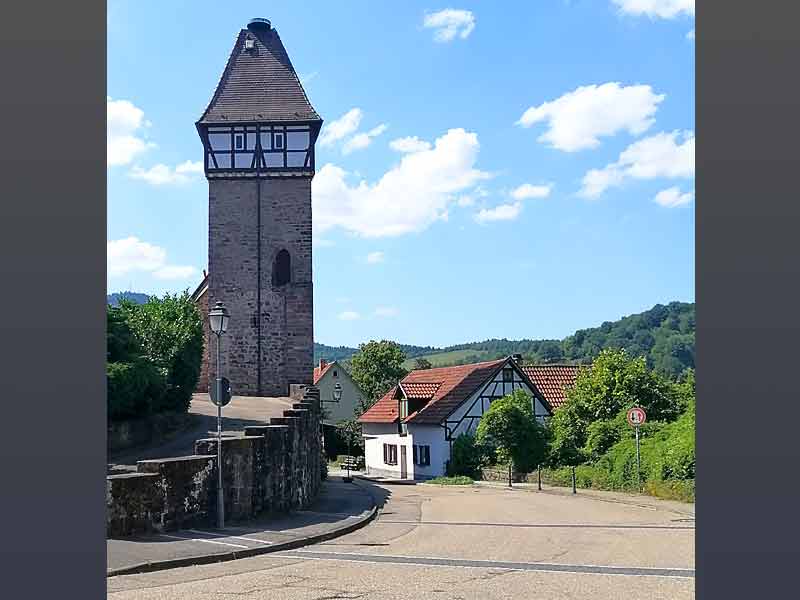Oberes Tor
Das Obere Tor wird erstmals 1441 erwähnt, war als eines der beiden Haupttore der Stadtbefestigung allerdings sicher älteren Ursprungs. Seine ehemalige Lage wird seit 2017 durch eine Pflastermarkierung dargestellt. Der Tor konnte aus Richtung Baden-Baden nur über eine Brücke betreten werden, da die Stadt an dieser Stelle auch durch einen Graben geschützt wurde. Den Hauptschutz übernahm der etwa 40 Meter weiter westlich vorgelagerte, bereits vor 1387 bestehende Obere Turm, der seit dem 19. Jahrhundert zunächst die Bezeichnung Schimmelturm trug und heute als Storchenturm bekannt ist.
Das Tor war wie alle Stadttore nur tagsüber geöffnet und wurde ständig von einem Torknecht bewacht.
Das Tor wurde nach 1812 abgebrochen. Für dieses Jahr ist noch die Lieferung von Dachziegeln zur Reparatur nach einem Orkan dokumentiert. Eine Darstellung hat sich nicht erhalten.
 Mobile
Mobile








